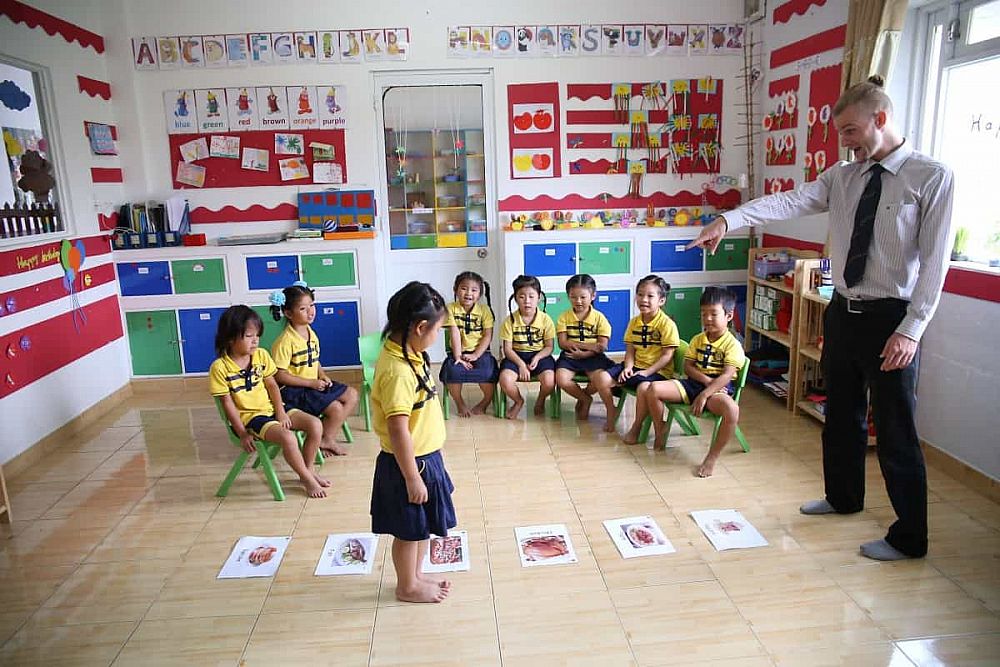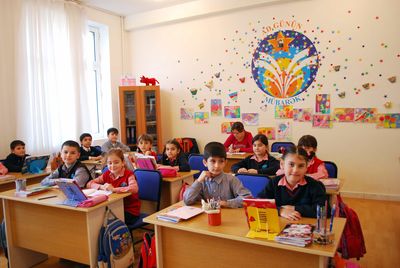4 Activities for Teaching Future Simple in the ESL Classroom

There are a myriad of ways to talk about the future in English, so it's important to have a variety of activities for students to practice what you've taught them. Here we're going to focus on various usages for future simple and describe some fun teaching ideas that match them.
Table of Contents
Are you ready to teach English abroad?
1. Spontaneous decisions
One of the most common ways we use future simple in our day to day lives is to make spontaneous or unplanned decisions. For example, when choosing food from a menu, (I'll have the fish please), or if you have to make a change of plan (a friend calls to say they can't pick you up to go out and you might say "It's ok, I'll take a taxi").
A fun way to practice this is to have card prompts with scenarios on, and have a game of language tennis. Organise students into two teams and set them up in two rows facing each other. The idea of the game is for you to criss-cross up the line of students getting them to make suitable decisions in response to the situation until such time as something is repeated, or a student can't think of anything new. At that point the opposing team is awarded a point and you start with a new scenario at the person that was last to speak. Example prompts could be "You've won the lottery" (I'll travel round the world> I'll leave my job…), "You've missed the last bus home" (I'll walk > I'll phone my wife > I'll sleep in the park……). You might want to give bonus points for creative or amusing language.
Also read: Top Online Lesson Plan Resources for New and Advanced Teachers
2. Predictions (no evidence)
Some people enjoy reading, and indeed believe, horoscopes or going to fortune tellers. Future simple is commonly used when talking about these predictions ("You will meet a tall, dark, stranger"). An enjoyable activity is to have students work in small groups and get them to make predictions about other people in the room. Give them prompt subjects on a prepared sheet, such as family, travel, career, love life, health, tomorrow, etc.
To add a further element of fun, you could have them read out their predictions without naming who they're about and have others guess who it is. The sort of language you should encourage might be "This person will visit 3 countries in the next few months and will meet someone special…" Another option is to have students in pairs or threes with cards face down which have the prompt subjects on. In this variation students take turns picking up a card and their partner tells their fortune.

3. Facts/certainties
Future simple is often used to talk about facts and certainties. It's important for your students to get the idea that the same tense that's used to talk about things we have no evidence for (horoscopes and fortune telling) is also used for things we are certain about such as "It will be dark by 8pm". One simple way to practice this, which does require a bit of preparation by the teacher, is to create a board game whereby students each have a game piece which they move around according to the roll of a dice. Put prompts in each square such as "the sun, at night, ice, live forever, 3 things you will definitely do tomorrow, definitely won't do…". When they land on a square, they must create an appropriate sentence using future simple, or move back to where they came from. For example "The sun will rise tomorrow morning", "Ice will melt if it's heated".
Also read: Online or In-Class - Which TEFL Course Should You Take?
4. Assumptions/deductions
Another typical use of future simple is when we make assumptions about things. For example, someone knocks at the door and you might say "That'll be John" or you might comment about someone: "He's old, so he won't like the music at my party". An enjoyable way for your students to practice this is to set them up role playing as a match making dating agency. Give your students pictures of people, with made up names and create a grid on a sheet with the names down one side and prompt subjects along the top such as likes, dislikes, age, nationality, job.
Students then discuss the people using future simple as much as possible. Be sure to model the activity clearly yourself using language such as "Fay will be about 25 years old and I think she'll enjoy going for walks so she'll be a good match for Joe". Make sure you allow time at the end of the lesson for the different groups to discuss their choices.

Listen to this blog post
Are you ready to teach English abroad?
These activities for teaching future simple will help you create fun lessons your students will most certainly enjoy and benefit from.
Apply now & get certified to teach english abroad!
Speak with an ITTT advisor today to put together your personal plan for teaching English abroad.
Send us an email or call us toll-free at 1-800-490-0531 to speak with an ITTT advisor today.
Related Articles:
- Why You Should Take Specialized TEFL Courses
- The 5 Best Ways to Build Rapport With Your TEFL Students
- The Best Apps to Have on Your Phone While Teaching English Abroad
- 7 Steps to Paying Off Your Student Loans While Teaching English Abroad
- 5 Reasons Why Teaching English Abroad Enhances Your Career Prospects
- Two Traveling Teachers Share What It's Like Teaching English Abroad as a Couple



